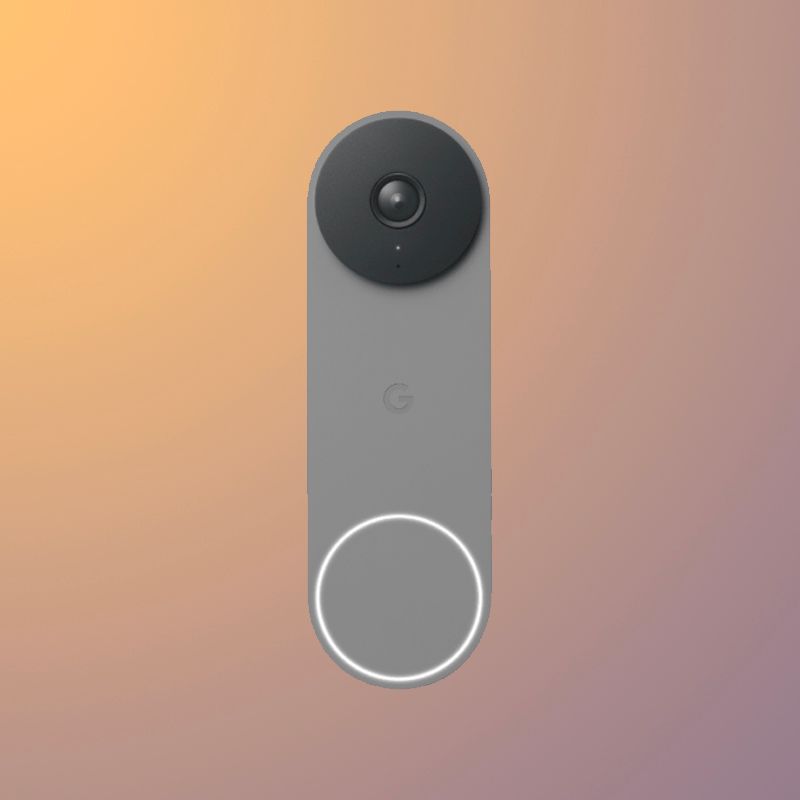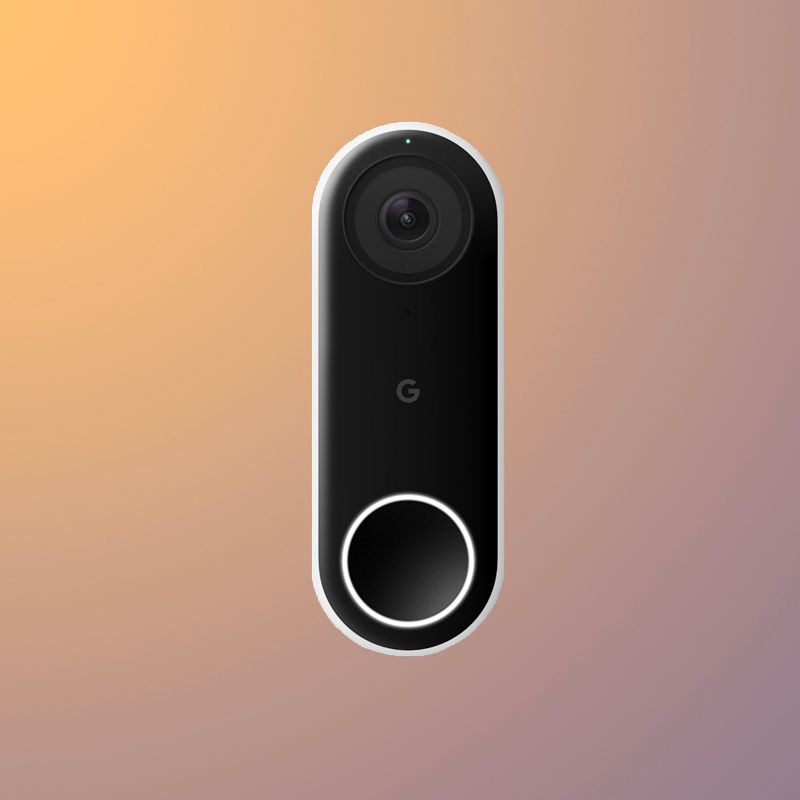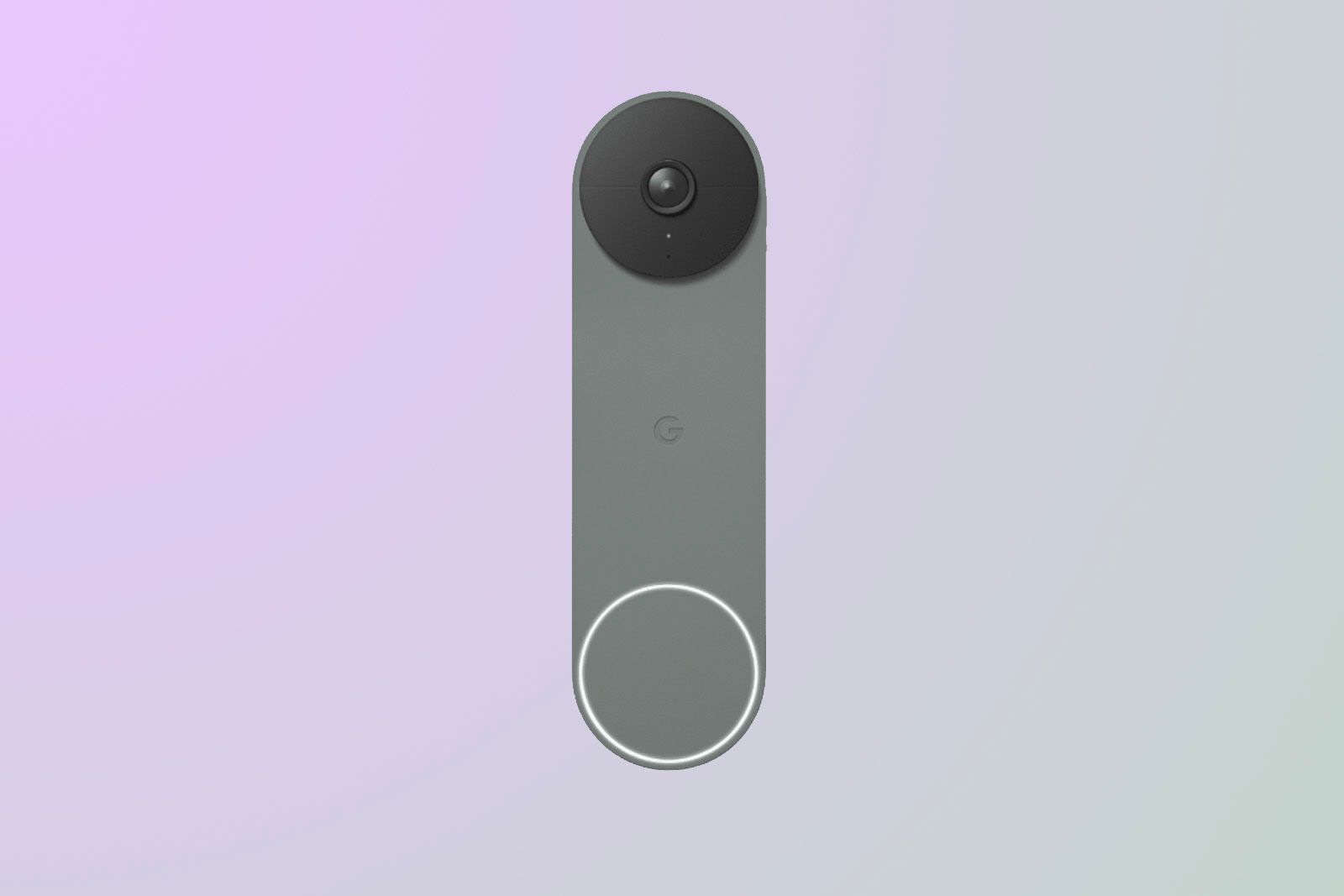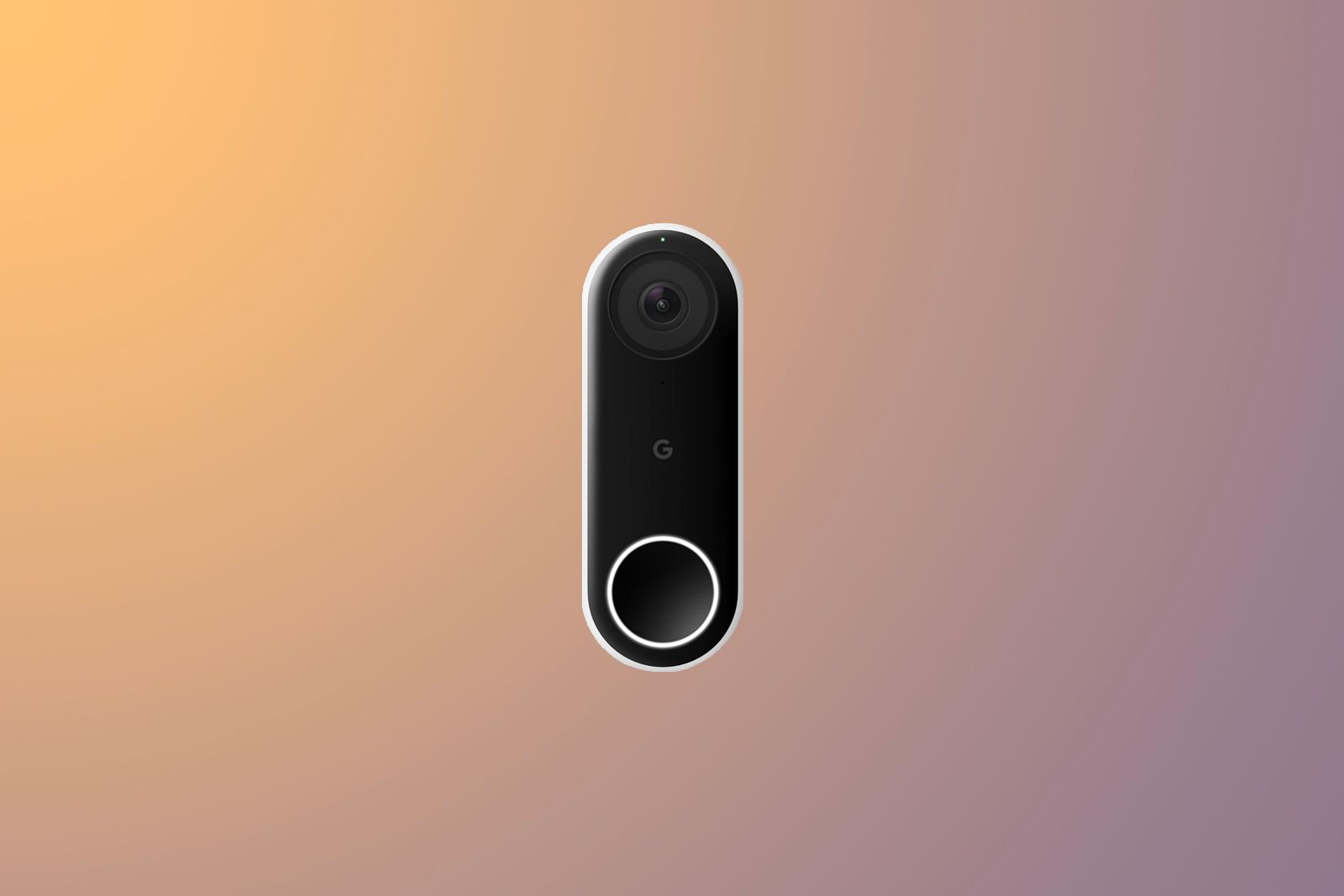
[adinserter block=”8″]
Google Nest first introduced a video doorbell in the form of the Nest Hello back in 2018. It was a wired doorbell, meaning installation wasn’t suitable – or more difficult – for some households.
Three years later in 2021, Google Nest added a battery-powered doorbell, with a few extra features compared to the Nest Hello. The company then added a wired version of its battery-powered model in 2022, but this model remains available in the US only, with the UK and Europe retaining Nest Hello as the wired option for now.
If you’re wondering which Google Nest doorbell is best for you, you’re in the right place. Here is how the Nest Doorbell (battery), Nest Hello Doorbell (wired) and Nest Doorbell (wired) compare to help you figure out which you should buy – or can buy – and what the differences are between them.
-
Google / Pocket-lint
Google Nest Doorbell (Battery)
Our top choice
The Google Nest Doorbell (Battery) is available is available in the US and UK – though in more colours in the US – and it comes with a range of features, whilst delivering great performance. It’s a great all-rounder option and suitable for most homes.
-

Google / Pocket-lint
Google Nest Doorbell (Wired)
A great option for US
The Google Nest Doorbell (wired) is only available in the US but it comes in the same lovely colours as the battery-powered model and offers the same camera and features. This model offers continuous video recording though, and a chime.
-

Google / Pocket-lint
Google Nest Hello (wired)
Great wired option for UK
The Nest Hello Doorbell is a few years old, but it remains the only wired option in regions other than the US. It has a higher resolution and more subtle design than the newer models, but less features without the Nest Aware subscription.
Price, availability and specs
The Google Nest Doorbell (battery) costs £179.99 in the UK and $179.99 in the US. It launched in 2021 and is available globally, though for those in the US, there are four colour options, while for the UK and Europe, it only comes in white – or Snow as it is called.
The Google Nest Hello Doorbell (wired) costs £229.99 in the UK and it was $229.99 in the US when it first launched too. As we mentioned, the Hello was replaced by the Nest Doorbell (wired) in the US in 2022 though, and that model costs the same as the battery-powered option at $179.99 so it’s cheaper than the Hello was. It also comes in the same four colour options as the battery model in the US.
To make things lovely and confusing though, the Nest Hello is still available through some retailers in the US and it’s quite a bit cheaper too, not just from its initial launch price but compared to the Nest Doorbell (wired) too, so for those on that side of the pond, the Hello might still be a consideration in your buying process. It is only available in black no matter where you are in the world.
Keep in mind that with the wired options, whether Nest Hello in the UK, US and Europe, or Nest Doorbell (wired) in the US, you need to factor in installation costs if you don’t have an existing wired doorbell.
We’ve gone into more detail on how the Nest Doorbell models compare further down this feature but you can find a quick glance spec table below to help highlight some of the key differences.
-
Google Nest Doorbell (Battery) Google Nest Doorbell (Wired) Google Nest Hello (wired) Video Resolution 1.3MP colour sensor, 6x digital zoom, 3:4 ratio 1.3MP colour sensor, 6x digital zoom, 3:4 ratio 3MP colour sensor, 8x digital zoom, 4:3 ratio Field of View 145-degree 145-degree 160-degree Power Source Battery or wired Wired Wired Voice Compatibility Google Assistant and Amazon Alexa Google Assistant and Amazon Alexa Google Assistant and Amazon Alexa App Compatibility iOS and Android iOS and Android iOS and Android Operating limits –20°C to 40°C (–4°F to 104°F) −20°C to 40°C (–4°F TO 104°F) –20°C to 40°C (–4°F to 104°F) Measurements 160 x 46 x 24.1mm (6.3 x 1.8 x 0.95-inches), 206g (7.03oz), IP54 131 x 42 x 28mm (5.2 x 1.7 x 1.1-inches), 140g (4.9oz) 117 x 43.2 x 26mm (4.6 x 1.7 x 1.0-inches), 122g (4.28oz) IPX4
Design
The Google Nest doorbells share similar design traits – especially in the case of the Nest Doorbell (battery) and Nest Doorbell (wired). The original Nest Hello comes in black only and features a button at the bottom with an LED ring around it, camera at the top, and a slim design with a rounded top and bottom.
The Nest Doorbell (battery) comes in white only in the UK and Europe, but four colours including white (Snow) the US and while it too features a button at the bottom with an LED ring, camera at the top and a slim design with rounded top and bottom, it is taller and wider than the Nest Hello (wired) and Nest Doorbell (battery) and it is also made with more sustainable materials.
The Nest Doorbell (wired) comes in four colours for those in the US – like the battery-powered model. These consist of Snow, Linen, Ivy and Ash. It has an almost identical design to the battery-powered model but it is smaller, with its measurements more in line with the Nest Hello. Like the Nest Doorbell (battery), it has a slim design with a rounded top and bottom, a camera sensor at the top and a button with an LED ring around it at the bottom.
All are a similar thickness, with the Nest Doorbell (wired) the thickest, the Nest Hello sitting in the middle and the Nest Doorbell (battery) being the slimmest. The Nest Hello Doorbell (wired) option has a IPX4 rating, while the battery option and the newer Doorbell (wired) both have an IP54 rating.
The only other thing to mention on the design front that’s worth considering is the camera lens is more obvious on the Nest Doorbell (battery) and Nest Doorbell (wired) compared to the Nest Hello as it has a black sensor and housing on a white or coloured background, depending on your region, while the Nest Hello is black on black. The button is larger on both the Doorbell (battery) and Doorbell (wired) than on the Nest Hello too, which isn’t necessarily a bad thing.
Features
All Nest Doorbells offer a Talk and Listen feature, allowing you to communicate with someone at your door through the Nest app in the case of Nest Hello and the Google Home app in the case of the Nest Doorbell (battery) and Nest Doorbell (wired) and they also all offer Quick Responses, which are preset messages that you can send quickly if you can’t get to your door. Unfortunately, you can’t change the Quick Responses, but the three options available do cover the majority of what you would need them for.
They also all have HD video with HDR and Night Vision, 24/7 live streaming and they offer up to 60 days of event video history with Nest Aware. You can also set activity zones and pair either up with a Nest Hub or Nest speaker for visitor announcements, which include Familiar Face alerts if you have the Nest Aware subscription.
There are a couple of differences in the rest of the features offered by the doorbells though. The Nest Hello Doorbell (wired) offers a chime, 10 days of 24/7 video history with Nest Aware Plus and motion and person alerts without a Nest Aware subscription.
The Nest Doorbell (battery) and Nest Doorbell (wired) meanwhile, have person, motion, parcel, animal and vehicle alerts without a subscription and three-hours video clip event history rather than still images like the Nest Hello. The Nest Doorbell (wired) offers always on video recording, while both the Doorbell (wired) and the Nest Doorbell (battery) will continue to record during a Wi-Fi or power cut. The Nest Doorbell (battery) only has a chime when wired in though, and there is no option for video history, nor a replacement battery option, which are a couple of the downfalls that come with the convenience of not having to be wired in.
Hardware and specs
The Nest Hello Doorbell (wired) offers a 4:3 aspect ratio and a 160-degree diagonal field of view. It’s a wider view than the battery-powered Nest doorbell and the Nest Doorbell (wired), fitting in a group of people for example, though you will still be able to see packages on the floor. It has a 1/3-inch, 3-megapixel colour sensor that offers 8x digital zoom and it offers 1600 x 1200 video at 30fps.
The Nest Doorbell (battery) and Nest Doorbell (wired) both have a 3:4 aspect ratio and a 145-degree diagonal field of view. They have a taller view than the Hello wired doorbell, enabling you to better see things on the floor in front of your doorbell, as well as people. They both have a 1/3-inch, 1.3-megapixel colour sensor that offers 6x digital zoom and 1280 x 960 video at 30fps.
Despite the resolution being lower than the Nest Hello though, Google claims the Doorbell (battery) and Doorbell (wired) have hybrid lenses made of glass and plastic, designed to provide more clarity. The camera pixels are also 125 per cent larger than the Nest Hello to capture more light. When we reviewed the Nest Doorbell (battery), we thought the image quality wasn’t as clear as the Nest Hello, the colours weren’t as true to life, and there was more image noise. That said, video and image quality on the battery-powered doorbell is more than sufficient. You can see faces clearly, as well as what is going on day or night thanks to the high dynamic range (HDR) and night mode. The Hello does have better night mode in our experience though.
All have a speaker and microphone on board, though the battery-operated doorbell and newer wired model offer noise cancellation.
Of course, the biggest difference in the Nest doorbells is the Nest Hello Doorbell and Nest Doorbell (wired) are both wired and therefore need to be professionally installed unless you already have a wired doorbell, while the Nest Doorbell (battery) can be battery powered or wired. You will need to charge the battery if you opt for battery-powered so bear that in mind. A one-metre charging cable comes in the box.
Conclusion
The first decision between the Nest Doorbells will come down to your home and which is more suitable in terms of installation, as well as what region you live in. For some, the wired doorbell options won’t be practical and therefore, the battery option is your only option. And if you’re in the UK or Europe, your options are further limited in that the Nest Doorbell (battery) only comes in white. For those in the US, you at least get a few colour options to choose from in the battery model.

Google Nest Doorbell (Battery)
Our top choice
$157 $179 Save $22
If a wired model is what you’re looking for – perhaps you have a wired model currently, for example – then the Hello is your only option in the UK and Europe, and it’s a great one still, despite being several years old now. For those in the US, you can opt for the Nest Hello if you can find it, or the Nest Doorbell (wired), which brings in the design and features of the battery model but in a more compact format. Both offer a chime and continuous video recording, which the battery model misses out on.
The battery-powered Nest Doorbell and Nest Doorbell (wired) have a couple of extra features over the Nest Hello wired doorbell though, like more alerts included without a subscription and the ability to continue recording even in a power cut or Wi-Fi cut. They are also cheaper than the Nest Hello in the UK and Europe.
The Nest Hello meanwhile, offers better video quality and uses the Nest app over Google Home app, which is a nicer user experience overall. Whatever option you choose, it’s likely you will be happy with any of them though.

Google Nest Hello (wired)
Great wired option for UK
$179 $229 Save $50
The Nest Hello offers great video and image quality, as well as a design that’s clean and modern.
[adinserter block=”8″]
Credit : Source Post






